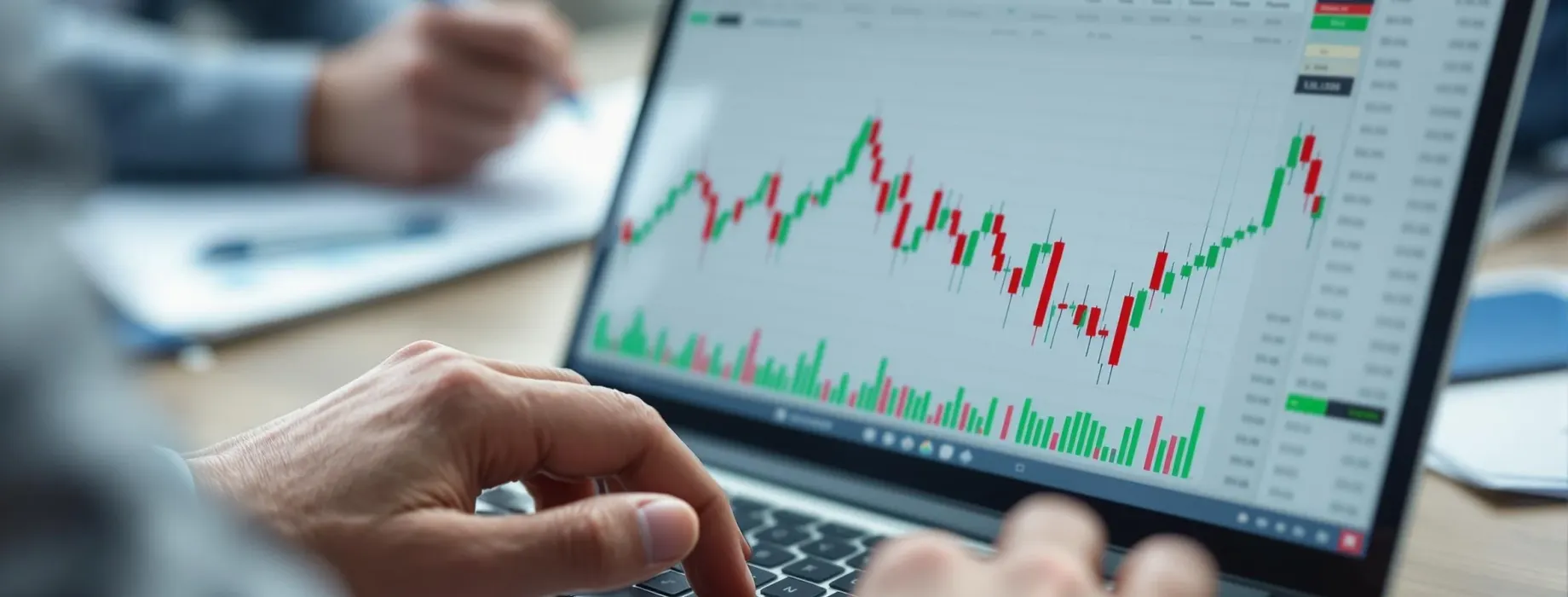- Day trading typically requires a larger starting capital to generate meaningful returns
- Investing can begin with smaller amounts through gradual accumulation
- Day trading may offer quicker profits but with elevated risk
- Investing harnesses compound growth over longer timeframes
Day Trading vs Investing: Understanding the Core Differences Between These Trading Approaches

When entering the financial markets, one of the first decisions you'll face is choosing between day trading vs investing. These two approaches represent different philosophies, time horizons, and risk profiles. Understanding their fundamental differences is crucial for aligning your trading strategy with your financial goals.
Key Characteristics of Day Trading and Investing
| Characteristic | Day Trading | Investing |
|---|---|---|
| Time Horizon | Hours or minutes | Months, years, or decades |
| Trade Frequency | Multiple daily trades | Occasional transactions |
| Profit Source | Price movements | Growth and income |
| Risk Level | Higher | Typically lower |
The difference between day trading and investing extends beyond timeframes. While day traders capitalize on short-term price fluctuations, investors focus on the fundamental value of assets over extended periods.
Time Commitment: A Critical Factor
| Aspect | Day Trading | Investing |
|---|---|---|
| Daily Hours | 4-8 hours of active monitoring | 1 hour or less for research |
| Analysis Type | Technical charts, patterns | Fundamental company analysis |
| Skill Development | Constant practice needed | Gradual learning curve |
Day trading demands significant time commitment and technical expertise. Platforms like Pocket Option provide tools specifically designed for active traders who need real-time analysis capabilities.
Capital Requirements and Returns
| Financial Aspect | Day Trading | Investing |
|---|---|---|
| Starting Capital | $25,000+ (US PDT rule) | Can start with $100+ |
| Potential Returns | 1-5% daily (highly variable) | 7-12% annually (historical average) |
| Transaction Costs | Higher due to frequency | Lower due to infrequent trades |
Psychological Requirements
When comparing investing vs day trading, the psychological demands differ considerably. Day traders must make split-second decisions under pressure, while investors need patience to withstand market fluctuations without emotional reactions.
- Day trading requires emotional discipline and quick decision-making
- Investing demands patience and long-term perspective
- Day traders face daily stress from market volatility
- Investors deal with extended periods of uncertainty
| Skill | Day Trading Importance | Investing Importance |
|---|---|---|
| Emotional Control | Critical | Important |
| Quick Decision Making | Essential | Less crucial |
| Patience | Moderate | Extremely high |
Best Scenarios for Each Approach
| Scenario | Better Approach | Reason |
|---|---|---|
| Limited time availability | Investing | Requires less daily monitoring |
| Retirement planning | Investing | Aligns with long-term goals |
| Technical analysis interest | Day Trading | Leverages chart pattern expertise |
| High-risk tolerance | Day Trading | Offers higher volatility exposure |
The day trading vs investing decision ultimately depends on your financial goals, available time, and personal preferences. Many traders adopt a hybrid approach, allocating most capital to investments while using a smaller portion for day trading activities.
Getting Started with Either Approach
- Begin with thorough education about market fundamentals
- Practice with paper trading before committing real capital
- Start with small positions to gain practical experience
- Continuously track and analyze performance metrics
Conclusion
Both day trading and investing offer valid paths to financial growth, but they serve different purposes. Day trading provides opportunities for active market participation and potentially quicker profits, while investing builds wealth gradually with lower time demands. Consider your available time, capital, risk tolerance, and financial goals when deciding between these approaches. Many successful market participants eventually incorporate elements of both strategies to create a balanced financial portfolio.
FAQ
Is day trading more profitable than investing?
Neither approach is inherently more profitable than the other. Day trading may generate faster returns but comes with higher risk and stress levels. Investing typically produces more stable long-term results through compound growth. Your profitability with either strategy depends on your skill level, discipline, and market conditions.
How much money do I need to start day trading vs investing?
Day trading generally requires more starting capital—in the US, pattern day traders must maintain at least $25,000 in their accounts. Investing can begin with much smaller amounts, even $100 or less through fractional shares or regular contributions to investment accounts.
Can I combine day trading and investing strategies?
Yes, many people use a hybrid approach. A common strategy is to allocate 80-90% of your capital to long-term investments while using a smaller portion for active day trading. This balances growth potential with stability.
Does day trading require more skill than investing?
Day trading typically requires more specialized technical skills and intense focus in shorter timeframes. Investing requires broader fundamental analysis skills and emotional discipline over longer periods. Both approaches demand different skill sets rather than one being more difficult than the other.
Which platforms are suitable for beginners interested in day trading vs investing?
For new day traders, platforms like Pocket Option offer user-friendly interfaces with tools for technical analysis. Beginning investors might prefer apps like Vanguard or Fidelity that focus on long-term investment options with educational resources. Always choose platforms with strong security features and appropriate fee structures for your trading frequency.